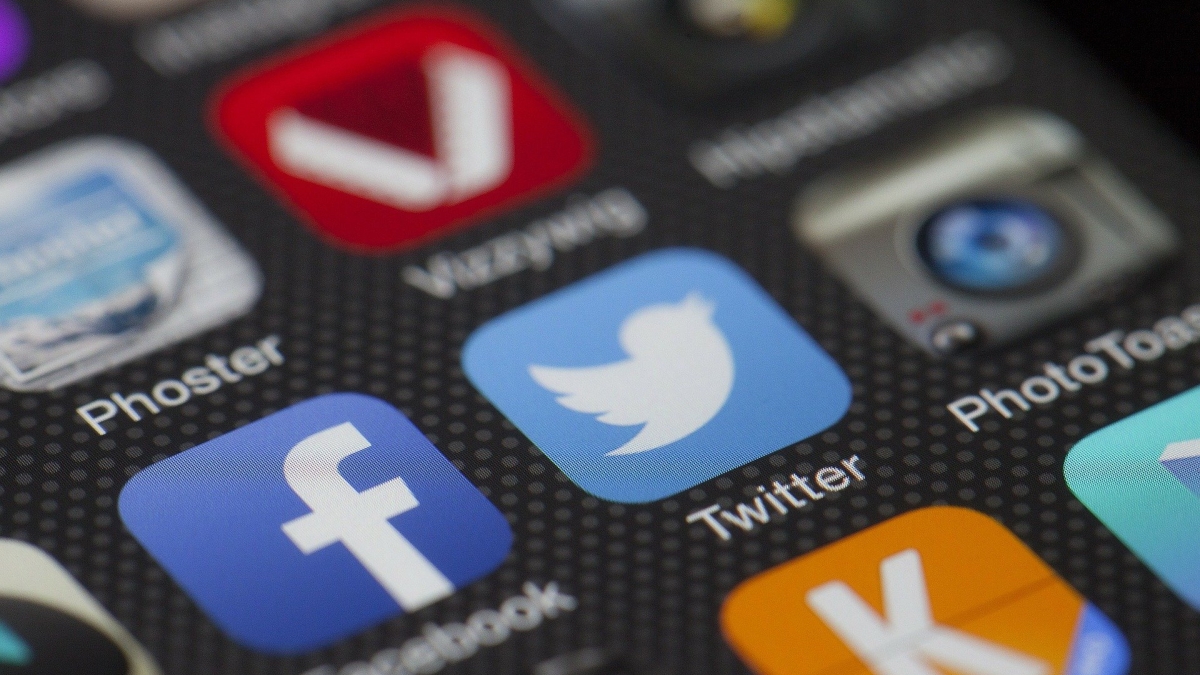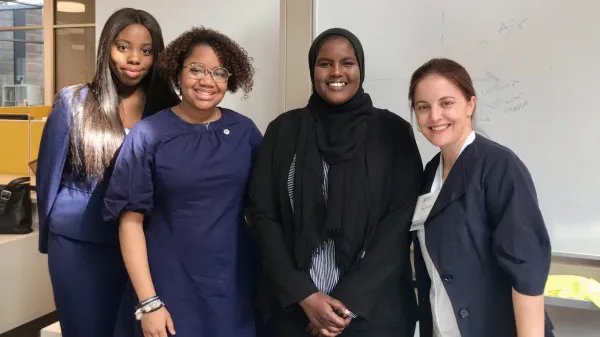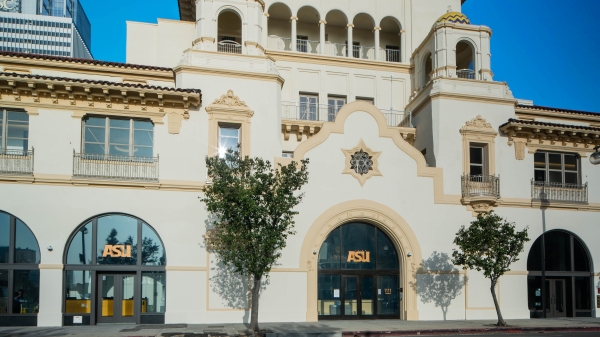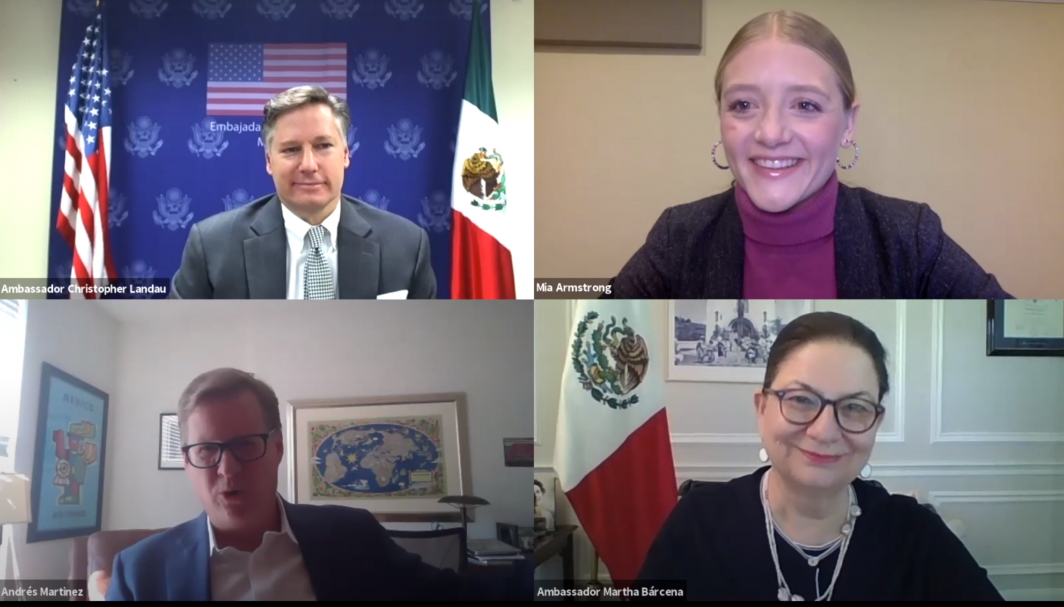Tweeting, diplomatically
Mexico, U.S. ambassadors discuss digital diplomacy and social media

When Martha Bárcena, the ambassador of Mexico to the U.S., first joined Mexico’s foreign service in 1979, issuing a public statement meant drafting a press release or calling a journalist.
Today, doing so is as simple as hitting a small blue button: “Tweet.”
Social media platforms like Twitter allow ambassadors to conduct immediate, personalized diplomacy. As they do so, ambassadors juggle the competing imperatives of communicating with their host nation's government, its people and the leadership of the foreign government they represent.
In a recent Convergence Lab and Future Tense event, Ambassador Bárcena and U.S. Ambassador to Mexico Christopher Landau discussed the complex triangulation and impact of digital diplomacy on the U.S.-Mexico relationship. Future Tense is a partnership of ASU, Slate and New America that explores the social impacts of technology, and Convergence Lab is an ASU project that connects the university to partners in Mexico to explore common challenges and opportunities.
Bárcena, trained in the traditional ways of diplomacy and a self-professed generally private person, was initially “very reluctant to use social media as an ambassador,” she said. But as it became clear that platforms like Twitter were integral to public diplomacy, she embraced them. Her goal, said Bárcena, is to use social media to “paint a broader picture of Mexico” and Mexicans in the U.S., in particular by using hashtags like #BuildingBridges and #TogetherWeAreBetter.
(Clockwise from top left) Ambassador Christopher Landau, Convergence Lab Coordinator Mia Armstrong, Ambassador Martha Bárcena and Future Tense Editorial Director Andrés Martínez discuss the role of digital diplomacy in the U.S.-Mexico relationship on Oct. 7. Image courtesy of Mia Armstrong
Landau’s diplomatic trajectory has been different. Prior to being appointed ambassador by President Donald Trump in 2019, Landau was a high-profile Washington, D.C., lawyer, whose career included arguing nine cases in front of the Supreme Court and clerking for Justice Antonin Scalia and Justice Clarence Thomas. Social media wasn’t part of his legal career, where it’s better to stay behind the scenes, he said.
“I joined Twitter when President Trump was elected, because that became a critical source of news,” he explained.
But Landau wasn’t very active on the platform until he arrived in Mexico City in August 2019 and inherited an official U.S. State Department account, @USAmbMex. Shortly afterward, he visited the picturesque canals of Xochimilco and tweeted a photo of his family. When the tweet received thousands of likes and numerous comments from Mexican Twitter users, Landau realized that the platform was “a valuable tool for making myself visible to the Mexican public … it demystified, a little bit, the office of ambassador," he said. Since then, Landau has grown the following of his account from around 40,000 to more than 267,000.
A key facet of digital diplomacy, embraced by both ambassadors, is interacting directly with followers, thus opening the door to questions and dialogue. In doing so, the ambassadors have to balance complex questions of when to engage with criticism, and in what tone. In particular, research shows that female leaders on social media are more likely to receive negative criticism and to be targets of abuse and harassment.
“In general, I don’t engage in fights. I receive criticism, providing that they’re not insults,” said Bárcena, who noted that there is a clear line between substance-based criticism and inappropriate insults that should be reported.
Landau said he has found Twitter to be a useful tool to listen to public concerns about subjects like visa policy.
“Sometimes when you’re in a leadership position, I think one of the biggest dangers is that you live in a bubble, where people just tell you what you want to hear,” he said. Twitter may be its own bubble, but it’s certainly a larger one than diplomats would otherwise find themselves in.
The role of Twitter as a channel of communication is complicated by the fact that both ambassadors represent presidents who are in constant, direct communication with the public, either via their own use of social media or through regular press conferences. “In some ways, these presidents, unlike perhaps some of their predecessors, are less in need of intermediaries, because they have that direct connection,” said Andrés Martínez, editorial director of Future Tense and professor in ASU’s Walter Cronkite School of Journalism and Mass Communication, who moderated the conversation along with Convergence Lab Coordinator Mia Armstrong.
There is also the question of what an ambassador should be focusing on while tweeting: policy priorities, service-oriented information or “slice of life” content.
While both ambassadors post content from all three of those categories, Landau has found that tweets dealing purely with policy issues get the fewest interactions.
“I put up a picture of my dinner, and the likes go through the roof,” he said. “I don’t want to just do that, because I think there is an ultimate, more substantive goal here, but my experience is that the interaction is much higher for the lighter tweets.”
Bárcena has found that the success of different types of content varies by platform. For example, when the embassy wants to communicate with Mexicans in the U.S., Facebook tends to be the channel it uses. In managing the ambassadorial and embassy accounts, she said, “we try to be very flexible … service-oriented use of social media is key.”
Though it’s unclear how the ways ambassadors use digital platforms will evolve in the future, digital diplomacy is here to stay.
“More and more bureaucratic processes will be done through digital media,” said Bárcena, who highlighted that future efforts should focus on combating polarization and disinformation on social media.
Digital diplomacy will continue to require a lot of personal buy-in from diplomats. For a long time, Landau remembers, people would ask him who managed his account — and would express disbelief when he held up his own 10 fingers.
“For social media to work, it has to be authentic, and it has to reflect the personality of the individual person … the one thing you really can’t do on social media is fake it,” said Landau. “In a sense, my Twitter account is my diary.”
View a recording of the event. Follow @ASU_MX and @FutureTenseNow to stay up to date on upcoming events.
Written by Mia Armstrong
Top image courtesy of Pixabay
More Law, journalism and politics

School of Politics and Global Studies director's new book explores mass violence
Why do people commit atrocities and why are certain groups, including religious and ethnic, more vulnerable to large-scale violence? These questions are explored in a new book by Güneş Murat Tezcür…

ASU faculty contributing to improvement of Wikipedia
Many academics have a love-hate relationship with Wikipedia. While the website has information about almost anything you can imagine, the credibility of that information is sometimes suspect. Tracy…

ASU Law students gain vital experience through Los Angeles location
Students at the Sandra Day O’Connor College of Law at Arizona State University may be concentrated in the school’s downtown Phoenix headquarters, but they have more choices than ever when it comes to…
